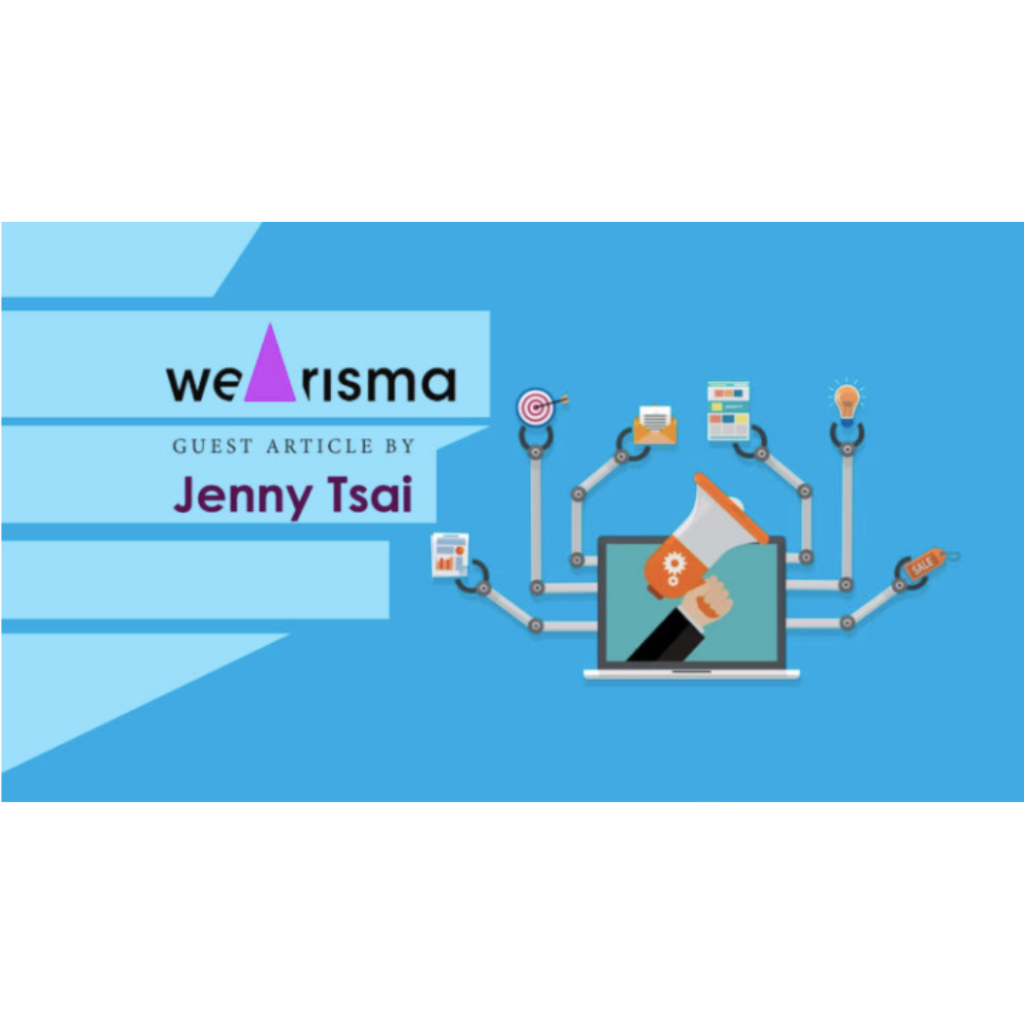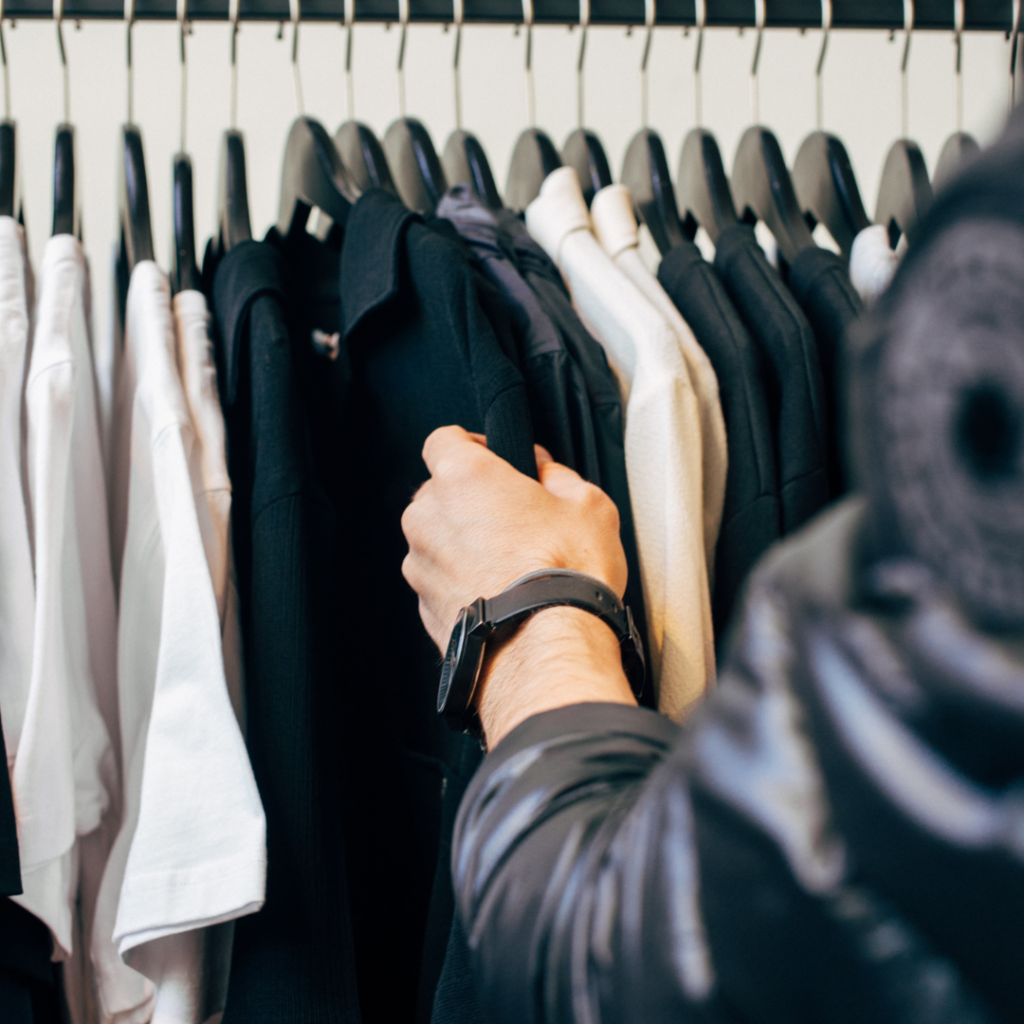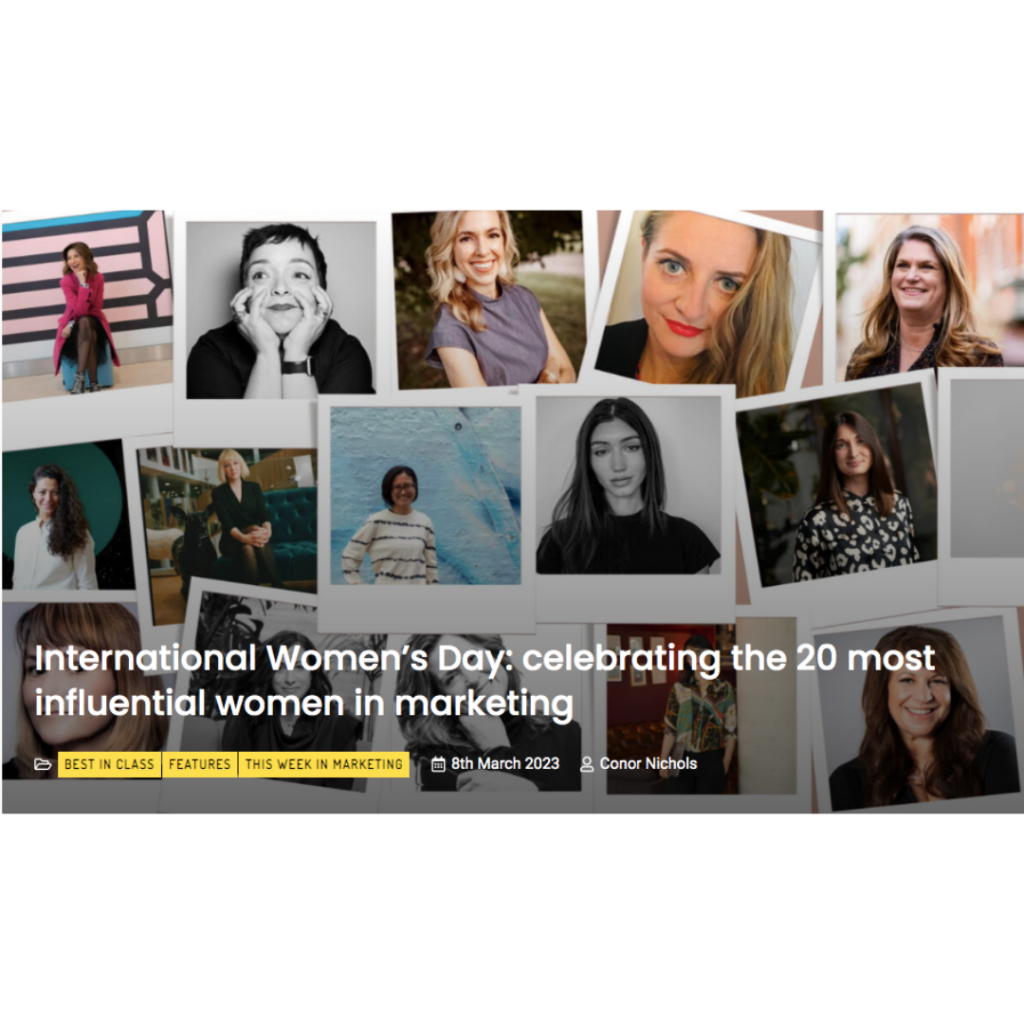
The Top-Performing Campaigns of 2019
Last week, we looked ahead to 2020 and revealed the top trends that brands should be embracing in order to elevate their Influencer Marketing strategies. However, when planning ahead, it’s important to look back and acknowledge the successful campaigns that dominated online conversations in 2019. Utilising our platform built on A.I. and supported by human-centred analytics, Wearisma’s Research and Insights Team have identified 7 winning campaigns to help you discover new ways to successfully communicate your brand online.
Looking at the brand’s performance (as determined by Media Value and Engagement Rate) 30 days before and 30 days after the campaign launch, Wearisma has identified Popeye’s, Agent Provocateur, Gillette, Calvin Klein, Givenchy, Nike and Zalando as creating 2019’s top Campaigns:
1. Popeye’s ‘Chicken Sandwich’
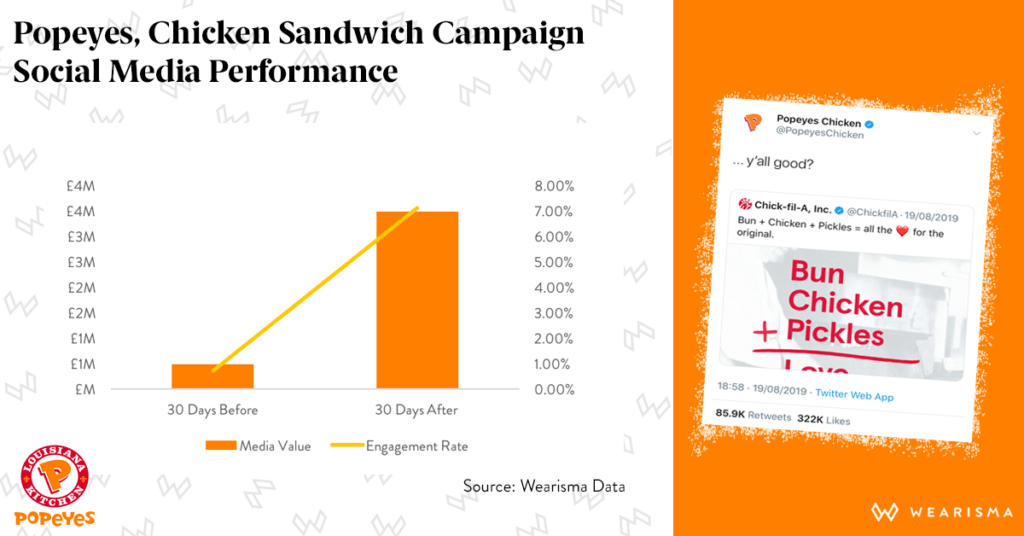
When the US fried chicken restaurant chain launched its chicken sandwich in August, it had prepared a full marketing plan which relied prominently on TV advertisements. These plans were scrapped when a two-word tweet “…y’all good?” in response to a rival restaurant, ‘Chick-fil-a’ went viral. Wearisma’s analysis reveals that 30 days before the sandwich’s launch, Popeyes’ Media Value grew astronomically from £482K to £3.5M while their engagement rate went from 0.7% to 7.1%.
By utilising vernacular typical of their Louisiana roots, Popeye’s was able to humanise their brand and resonate with online audiences, particularly Millenial and Gen-Z influencers in an authentic way. The Chicken Sandwich campaign is also a great example of how getting influencers to ‘pick a side’ by fostering an atmosphere of rivalry can be a strong social media marketing tactic.
2. Agent Provocateur ‘Pump it up‘
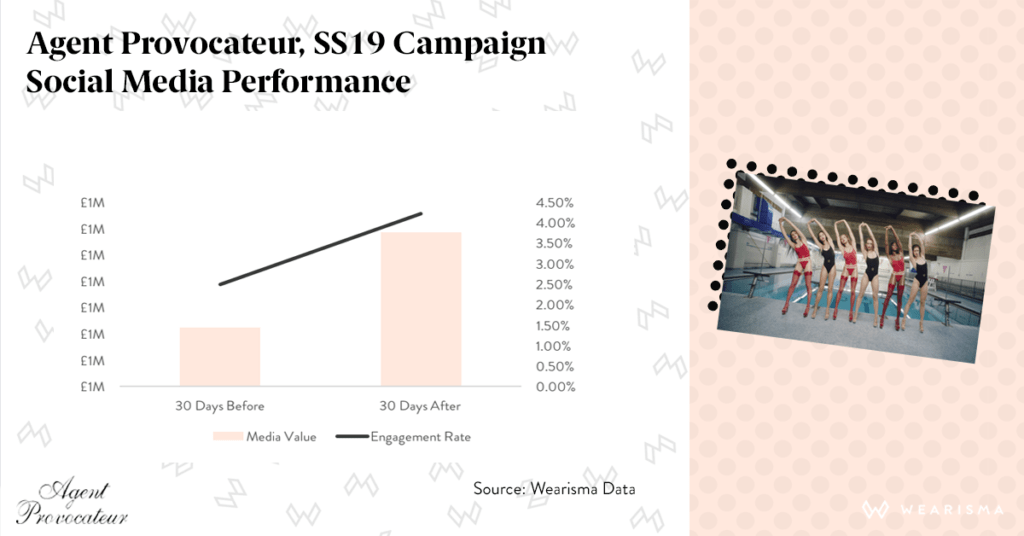
For their Spring/Summer campaign, Agent Provocateur created a series of videos via their social media accounts featuring a diverse set of models conducting 80’s style aerobic dances to the tune of ‘Pump up the Jam’ by Technotronic.
The videos were accompanied with copy that called on people to “own your sensual side, love your body and be unapologetic in your sexuality.” The messaging perfectly embodied the brand’s ethos to ‘#stretchtherules’, which Wearisma’s analysis reveals resonated with influencers online. The brand saw an 18.7% increase in Media Value to £1.1M while their Engagement Rate nearly doubled from 2.49% to 4.21% 30 days after the campaign launched.
3. Gillette ‘The Best Men Can Be‘
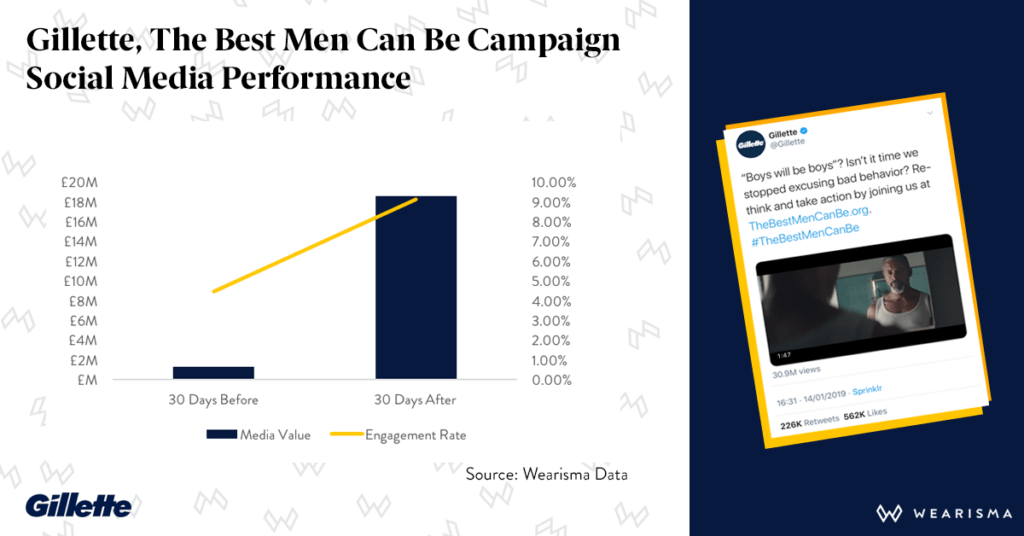
Another campaign that drew international media attention and resonated strongly with influencers was Gillette’s ‘The Best Men Can Be’ campaign. The campaign was centred around the damaging nature of ‘toxic masculinity’, a cultural norm that normalises aggression in men. In the campaign, Gillette asked its consumers a harrowing question “is this the best a man can be?”.
After the campaign, Wearisma’s analysis revealed that the brand’s Engagement rate more than doubled to 9.14% and their Media Value increased by £17.3M. Despite the backlash, (which only served to increase awareness) these figures suggest that the campaign was overall, a huge success online. The performance of this campaign outlines how taking a strong stance on popular socio-political topics can strengthen a brands position online.
4. Calvin Klein ‘I Speak Truth in #MyCalvins‘
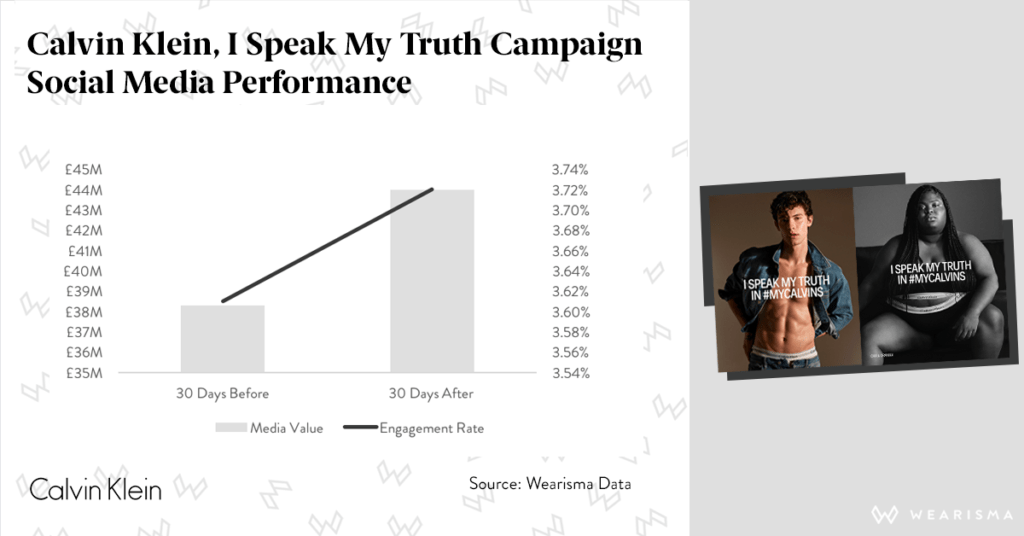
Calvin Klein’s #MyCalvins campaign, promoting the brand’s underwear and more recently, its denim line, has been running since 2014 and yet it still manages to capture the interest of online audiences.
The latest instalment of Calvin Klein’s campaign featured videos of musicians such as Shawn Mendes and Chika ‘speaking their truth’ in a manner that was authentic to their craft. According to Wearisma’s analysis, the campaign saw Calvin Klein’s Media Value jump by £5.7M. The success and longevity of this campaign can largely be attributed to the incredibly diverse set of brand ambassadors that Calvin Klein works with and the freedom they give these ambassadors to craft content that speaks to their individual audiences.
5. Givenchy ‘#Arivenchy’
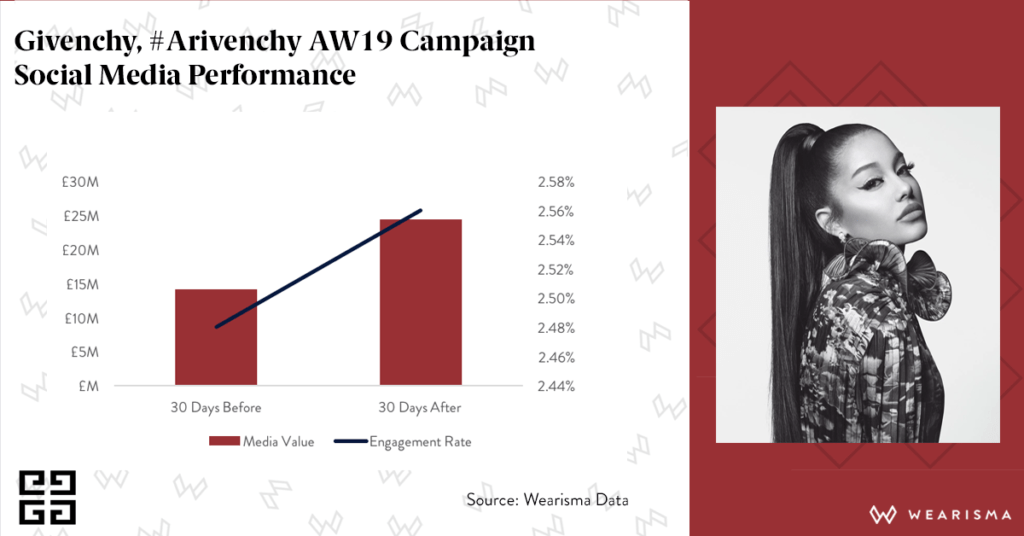
The worlds of fashion and music collided once again in July when Ariana Grande was introduced as the new face of the Givenchy’s 2019 Autumn-Winter collection. Perhaps in recognition of the prowess of Grande’s social media standing (she is the second most followed person on Instagram as of December 2019), the French luxury house created the hashtag #Arivenchy specifically for the collaboration.
Wearisma’s analysis indicates that this digital-first strategy boded well for Givenchy. When comparing their statistics from 30 days before to 30 days after the campaign launch, we can see that their Media Value jumped from £14.2M to £24.4M while their Engagement rate rose from 2.48% to 2.56%.
6. Nike ‘Dream Crazier‘
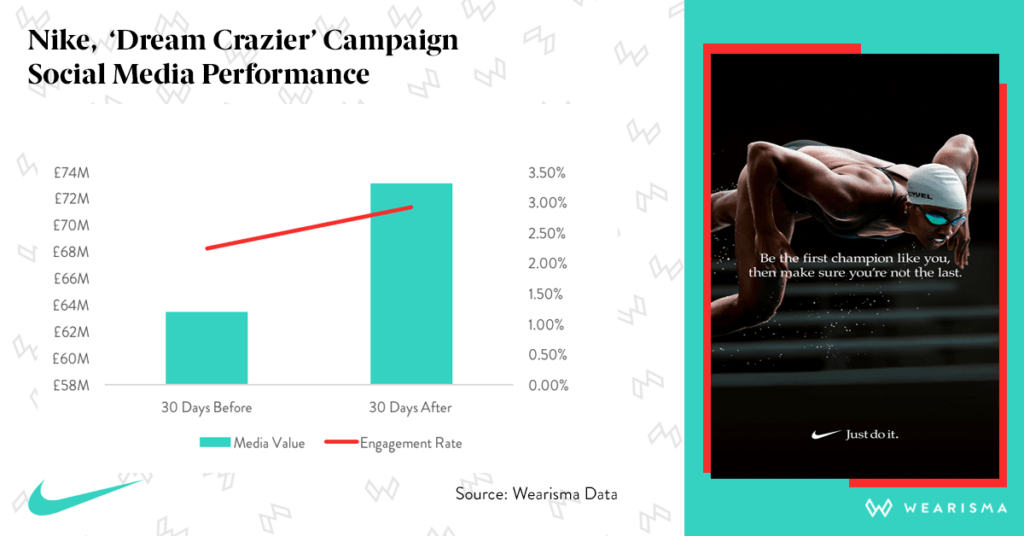
A 2018 global study by Edelman found that almost two-thirds of us make buying decisions based on a brand’s position on social or political issues. In 2018, Nike’s Emmy win for their campaign with American footballer Colin Kaepernick, who protests against police brutality, highlights the benefits of having a strong brand ideology.
This year, Nike reinforced their position on social change when they highlighted the plight of female athletes and women in general in their ‘Dream Crazier’ campaign. Narrated by Tennis Champion Serena Williams, the campaign video first depicts the negative labels that are attached to women when they express themselves. It then goes on to celebrate female sports champions, accompanied by an uplifting message. Nike’s Media Value rose to £73.1M and their Engagement Rate to 2.92% 30 days after the campaign (compared to £63.5M and 2.24% 30 days before the campaign launch).
7. Zalando ‘Free to Be‘
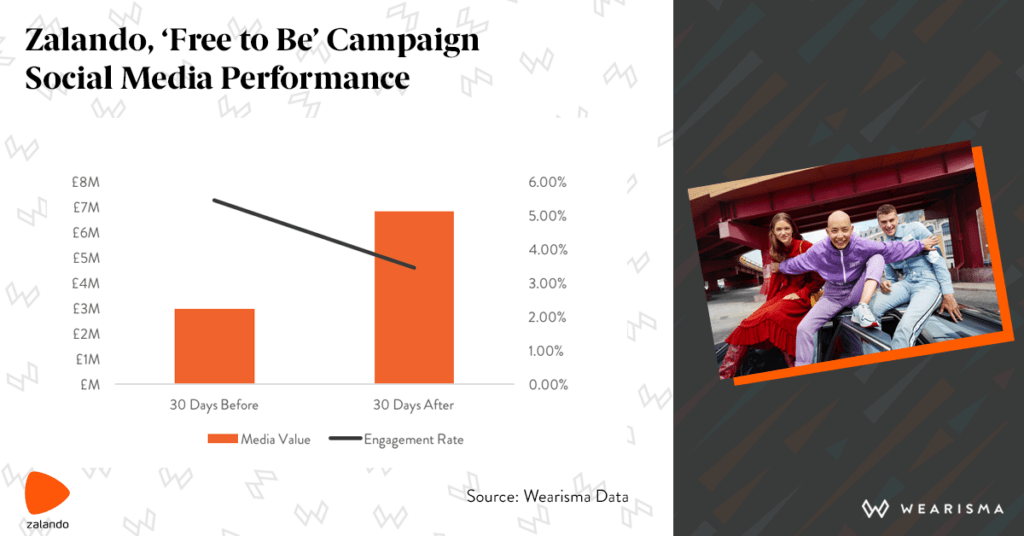
In a similar fashion to Nike, Zalando’s ‘Free to Be’ campaign reflected their brand ideology that “everyone is free to be themselves, regardless of size, age, gender or background.” The video was incredibly inclusive featuring alopecia-model Alice Hurel, teen ballet dancer, Leroy Mokgatle, curve model, Felicity Hayward, gender-nonconforming model Rain Dove and others. While Zalando witnessed a slight decrease in their Engagement Rate (most likely, attributable to a sharp increase in followers), their Media Value more than doubled from £3M to £6.8M.
With research finding that 53% of us believe that brands can do more to solve social problems than governments, it appears that the best way to gain traction online is to make sure that your brand ideology addresses societies major issues.
Takeaways
In 2020, brands must consider 4 things if they want to see online success with their campaigns.
- Campaigns should be authentic to a brand’s roots and speak to a brand’s core audience in a way that resonates with them.
- Campaigns should be inclusive, featuring diverse brand advocates that align with brand values.
- Campaigns should always be social first and provide a way for consumers to create organic discussions online.
- Lastly, in recognition of how consumers now look towards brands to have a moral compass, campaigns should touch on the current social and political discourse in order for brands to stay relevant.
